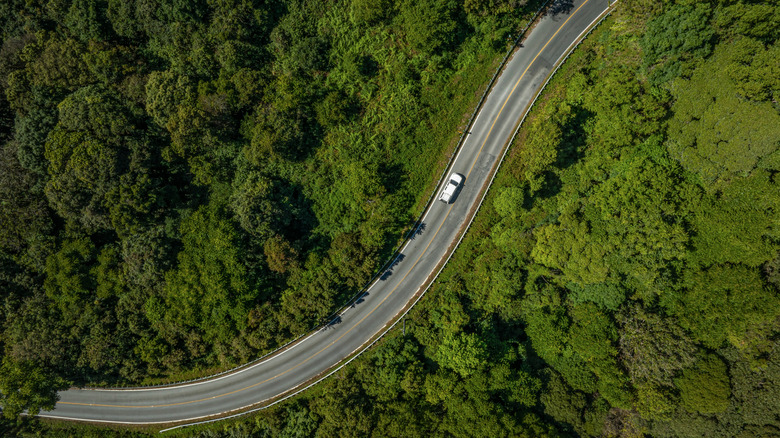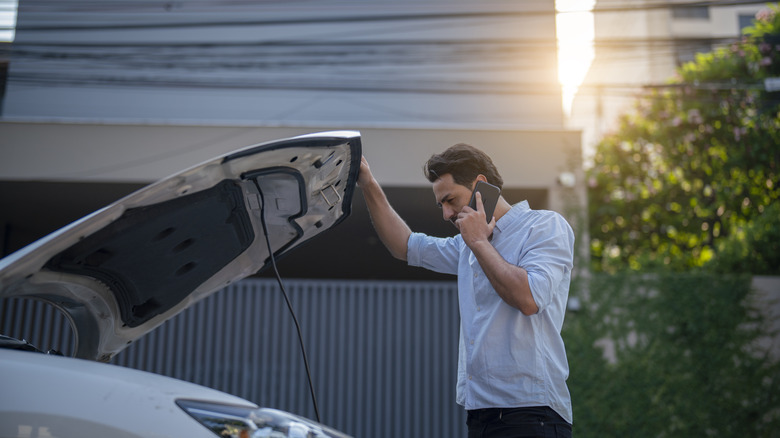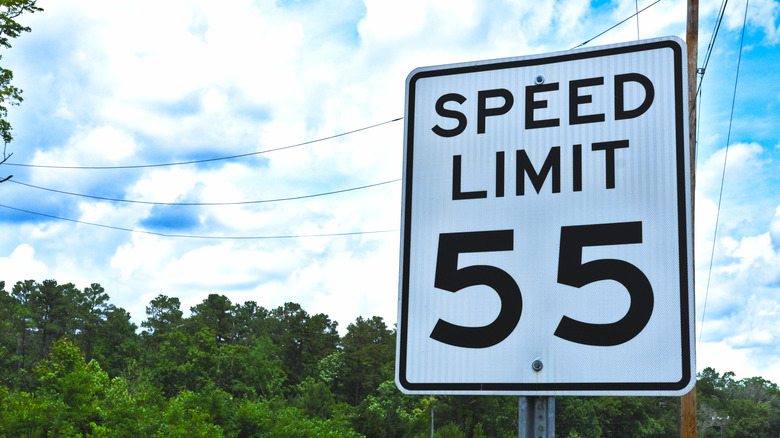Why You Should Never, Ever Coast In Neutral While Driving Downhill
As gas prices continue to rise across the country, drivers are looking to get the most out of their tank of gas before having to fill up. One potential way that drivers look to save fuel is by shifting their vehicle into neutral to coast down hills. In theory, that would make sense as the engine is not in use so there shouldn't be any fuel being used. However, in practice this doesn't work.
For vehicles with manual and automatic transmissions, coasting in neutral down hills will actually use more fuel than coasting in gear. When you coast down a hill and the vehicle is in gear, the engine's fuel system will actually cut off the fuel being injected into the engine. This is due to the vehicle's complicated fuel injection system, which will be explained in more detail below.
When drivers shift into neutral while coasting down a hill, the engine remains in an idling state. When idling, the fuel injection system will continue to pump fuel into the engine to keep the vehicle at a steady RPM. Not only will the vehicle continue to use fuel while in neutral, it can also be extremely dangerous and cause damage to engine components.
Dangers of coasting in neutral
Coasting down hills in neutral will do more than just use your fuel. Cars typically don't handle as well in neutral as they do while in gear, as the engine is connected to the drivetrain and won't be able to provide as much power to the steering. Say you're coasting down a hill in neutral and a deer jumps out of the woods, you most likely won't have the control you would need to avoid it, causing potential harm to you and your passengers.
As stated earlier, when coasting downhill in neutral your engine is still in idle and will receive increments of gasoline from the fuel pump. The amount of fuel used during idling is dependent on how large the engine is. In 2015, a U.S. Department of Energy study found that compact cars will typically consume about .1 to .2 gallons of fuel while idling each hour. When they looked at larger vehicles like city buses, idling consumed nearly a gallon of fuel each hour.
Although fuel is sent into the engine while idle, if your vehicle is in gear while cruising down a hill with your foot off the accelerator, the fuel injection system will recognize that there is no need for additional gasoline in the engine via the electronic control module.
Ways to save fuel
While shifting into neutral and cruising may not save fuel, there are a number of ways that drivers can eke out every last drop from their tank as efficiently as possible. One of the easiest ways to make sure your vehicle is getting the most from its gas is to ensure your tires are inflated properly. Oil company Mobil claims that tire pressure that's 10 psi below what is recommended by the tire can lead to a 10% decrease in fuel economy.
Another way to increase your fuel economy estimates is by maintaining a consistent speed while on the highway. Using cruise control when weather allows it or keeping your speed consistent puts less pressure on your engine and in turn uses less fuel. It is also recommended that drivers don't go too fast or too slow, as there are "sweet spots" in driving speeds that offer the best fuel economy estimates. Those speeds are around 55 mph, according to the Department of Energy.
An easy way to save fuel that may be unknown to most is to drive with air conditioning on when you're traveling on the highway. Opening the windows when traveling at high speeds actually reduces fuel economy because of the reduction in the vehicle's aerodynamics.


